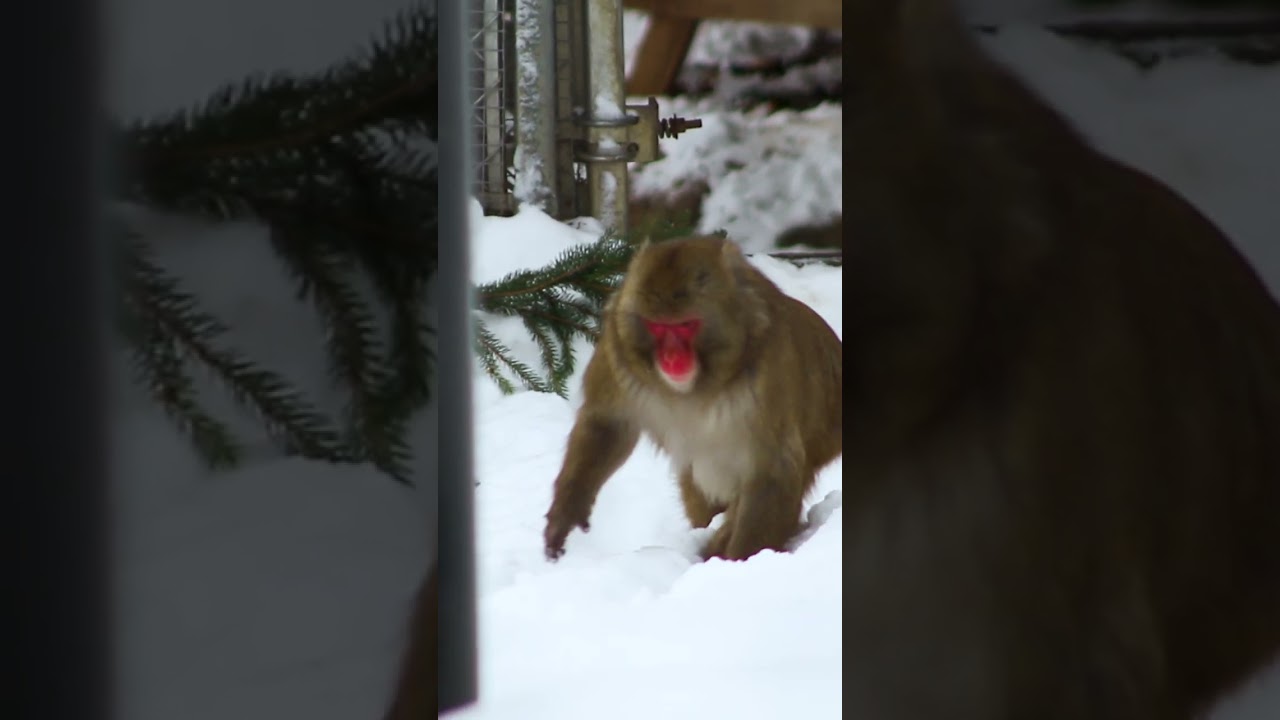– Discover the unique behaviors and adaptations of Japanese Macaques during winter
– Learn about the social structure and intelligence displayed by these snow-dwelling primates
– Understand the role of snow in the daily life of a macaque, from challenges to playful opportunities
Something is mesmerizing about watching a Japanese Macaque, or “Snow Monkey,” as it navigates a landscape turned white with snow. With their red faces framed by thick fur, they present a picture of resilience and adaptation that resonates with anyone who has ever faced the challenges of winter.
The scene is near mythical – Japan’s steep, forested hills cloaked in white, steam rising from hot springs, and amidst them, clusters of macaques huddled as if in quiet conversation about the cold around them. To witness these creatures is to be offered a glimpse into an intricate world where the battle against the elements becomes a daily dance of survival and social interaction.
These macaques are the world’s most northerly non-human primates, and as you might imagine, life in the snow comes with its own set of challenges and adaptations. They’re known for their intelligence, which is on full display as they navigate their frosty world. Their social structures are complex, and their behaviors often mirror humanlike attributes, making them especially fascinating subjects of observation and study.
The snow itself plays a central role in the lives of these macaques. It is both a playground and an obstacle, a source of food and a barrier to it. Watching a macaque in the snow, you might see a playful youngster tossing a snowball or an elder carefully picking its way across an icy creek. Their lives, governed by the snow, are a series of adaptations that have allowed them to thrive in conditions that would have many others fleeing for warmer climes.
As we delve into the heart of macaque society, we already know they’re not just surviving—they’re thriving. How do they do it? It begins with their diet. Japanese Macaques have a diverse menu that shifts with the seasons. In the winter, they’ll often eat snow to stay hydrated, a resource that’s abundant and within easy reach. They’re both opportunistic and flexible in their eating habits, an advantage in the unforgiving winter months.
Their social lives are just as interesting. Macaques live in matrilineal societies, with family groups led by females. Winter brings them closer together, quite literally, as they huddle for warmth. During these cozy gatherings, the subtleties of their interactions come to light. There’s grooming, which is a practical hygiene means and a critical social bonding exercise.
It’s not all about survival, though. Macaques have a playful side that feels all too familiar. Young macaques are especially prone to frolicking in the snow, engaging in behavior that seems to have no purpose other than pure enjoyment. This joie de vivre, set against the stark backdrop of a harsh winter, adds another layer of charm to these remarkable animals.
But perhaps the most iconic image of these primates is their indulgence in onsen, the natural hot springs that dot the snowy landscape of Japan. The warmth of these waters offers a reprieve from the biting cold, and the macaques are savvy enough to take full advantage. Observers often note the apparent bliss on the faces of macaques soaking in the onsen, a look of almost human contentment.
This behavior isn’t just an amusing quirk—it’s a testament to the macaques’ intelligence and flexibility. They’ve created a little warm oasis amidst the cold by learning to utilize the resources available. It’s a reminder of the ingenuity of nature and the ability of animals to adapt in the most surprising ways.
Cultural significance imbues these primates with a distinct status in Japan. They appear in folklore and are a draw for tourists worldwide. Protection efforts ensure that they continue to thrive, maintaining a balance between human interest and the well-being of the macaques.
If you’re lucky enough to visit them, you’ll notice how they’re almost unfazed by human presence. This tolerance has paved the way for extensive research, which has provided valuable insights into primate behavior and evolution, offering a clearer mirror to our societal structures.
Yet, it’s not just about scientific observation. There’s a quiet lesson in witnessing the Snow Monkeys’ winter way of life. Their existence reminds them of the beauty of adaptation, community, and the pure joy in life’s simplest pleasures—even something as mundane as sitting in warm water on a cold day.
Every season offers a different perspective on the lives of these Snow Monkeys, but it’s winter when the poetry of their existence comes into sharpest relief. Snow may cover the ground, but for the macaques, it’s merely another element of their habitat to be mastered, a white canvas upon which they paint their daily lives.
While you or I may grumble about the inconveniences of snow, next time the flakes start to fall, consider the Japanese Macaques. For them, the snow is not a barrier but a familiar landscape—a source of joy, a resource to be exploited, and a puzzle to be solved.
As we bow out of this immersion into the world of the Japanese Macaques, it is with a sense of wonder and respect for these primates who share so much with us yet quietly carve a life in an unforgiving landscape that it takes our breath away. Their resilience is educational, intelligence captivating, and enjoyment of life’s simplest pleasures is inspirational. In their snow-dappled world, the macaques are not just surviving—they are living a tale of winter that weaves itself into the fabric of the natural world with elegance, endurance, and a playful touch of their unique magic.
*****
Source Description
Everyone can relate to a macaque in the snow, whether you’re trudging through it, eating it, or avoiding it entirely,

